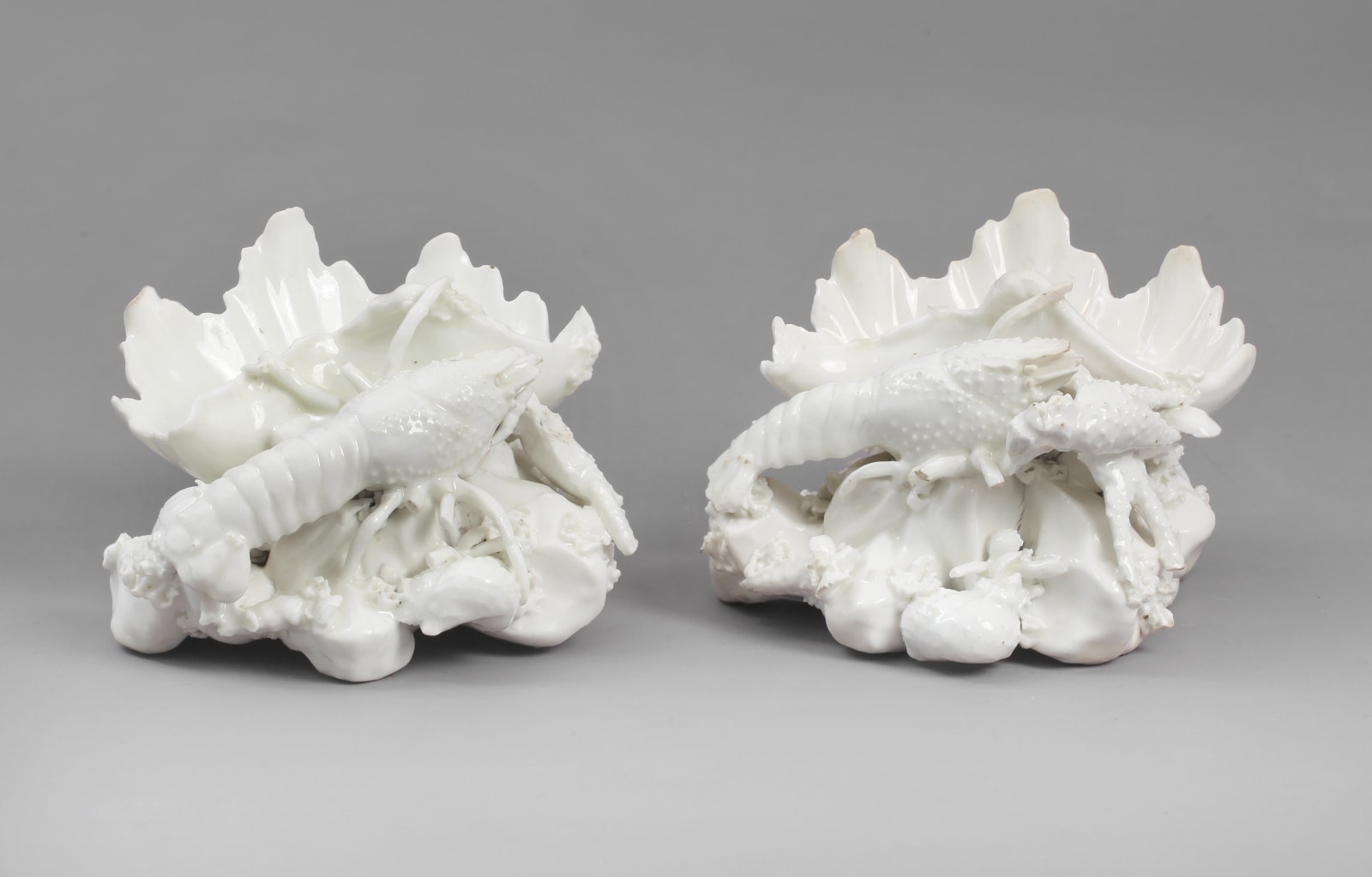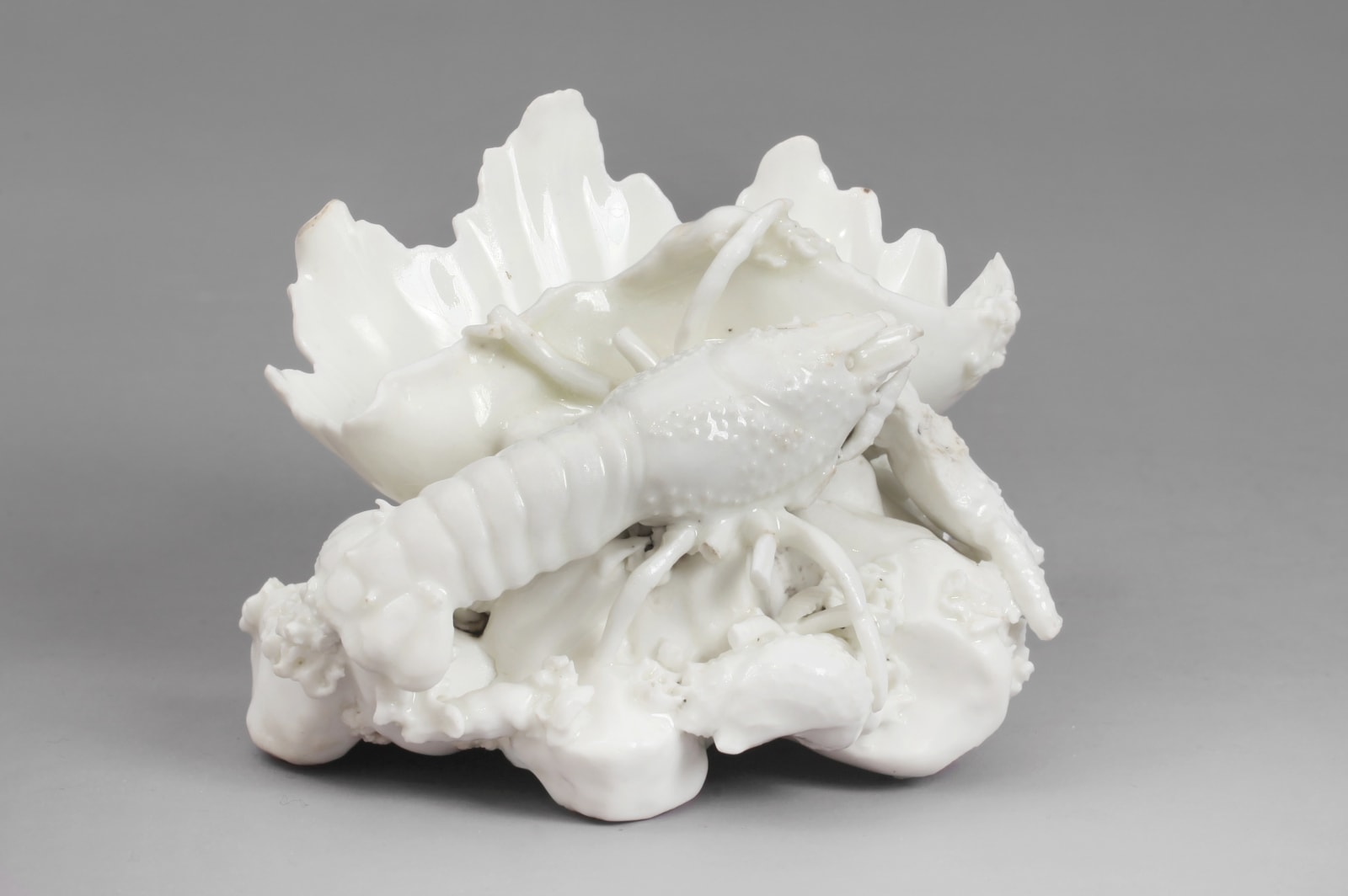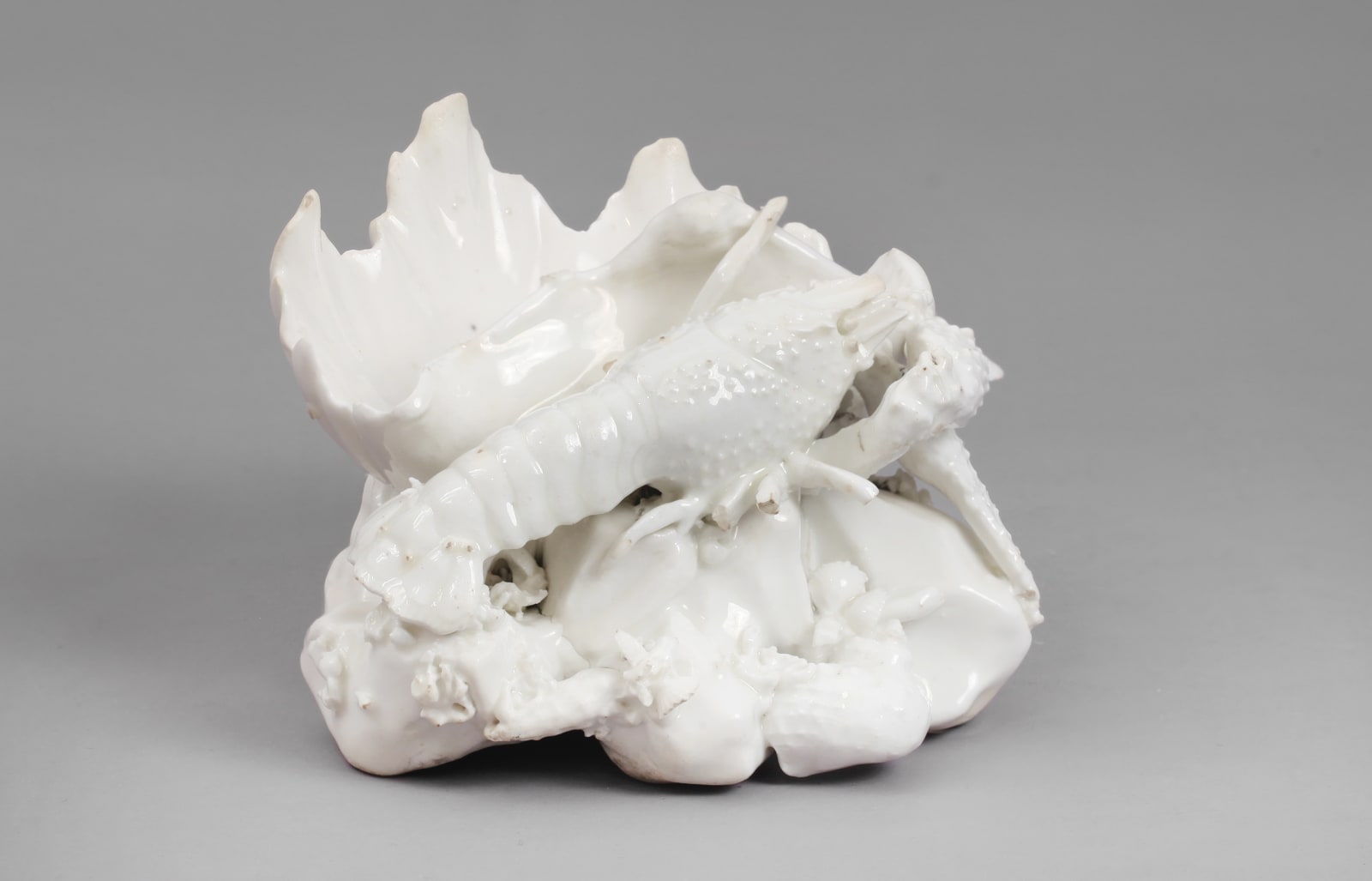


An extremely rare and early Pair of Chelsea Porcelain Crayfish Salts of the Incised Triangle Period , Circa 1744-49
Further images
An extremely rare and early Pair of Chelsea Porcelain Crayfish Salts of the Incised Triangle Period of manufacture, beautifully modelled after the original Silver models by Nicholas Sprimont, each with a crayfish cast from life, climbing over a rock work support, before a naturalistic up turned clam shell, the rocks applied with cast natural English estuary shells and sieved clay simulated seaweeds and corals.
The form of the Salt is based on several original designs by Juste Aurele Meissonier, Orfevre du Roi Louis V. The design was engraved by Gabriel Huquier at the Rue St Jacques: plate 14 in Livre de Legumes Inventees et Dessinees par J.Mer (Meissonier), published Paris 1744. The crayfish salt also derives some inspiration from the silver ‘surtout de table’ which included a pair of remarkable tureens made for Evelyn Pierrepoint, 2nd Duke of Kingston to a design by Meissonier in 1734 by Paris silversmiths Henry Adnet and Pierre Francois Bonnesstrenne.
The design of these extraordinary rococo tureen forms was at the height of the new fashion for expression of natural forms pioneered by Paris silversmiths. The design of the ‘Surtout de table’ was engraved by Huquier for inclusion in his Livres d’Ornaments, featuring designs by Meissonier, plate 115 in folio 72 published in 1744.
Nicholas Sprimont created this model first in silver gilt for inclusion within the ‘Neptune Service’ for Frederick Prince of Wales, these remain in the Royal Collection of His Majesty King Charles III. This essentially ‘royal silver style’ was then translated by Sprimont and his gifted and skilled modellers into porcelain within that very year of 1744 also. See Elizabeth Adams, Chelsea Porcelain, fig 3.2.
This pair of Crayfish Salts are illustrated in “F.S. Mackenna, Chelsea Porcelain, The Triangle and Raised Anchor Wares”, pl. 1, no.2 for these precise examples.
See: The F.S. MacKenna Collection of English Porcelain Part 1, Chelsea 1743 – 1758.
See: Pages 116/117 – From the Hurlbutt Collection – also illustrated in Hurlbutt’s, Chelsea China, pl 9 and exhibited in the Cheltenham Art Gallery & Museum, April 1947.
See: Illustrated in Dr. MacKenna’s own personal volume, created for his collection, entitled “The F.S. MacKenna Collection Of English Porcelain, Chelsea Volume”. This book is now in the ownership of The Brian Haughton Gallery.
See: Paul Crane, ‘A Question of Attribution: a chinoiserie-moulded Worcester teapot, exemplifying the moulded silver forms of the earliest English porcelain’. ECC Transactions vol. 27, 2016, p. 33-47, pls. 3, 4 and 5.
Marks: Incised Triangle mark to the underside of each
Join our mailing list
* denotes required fields
We will process the personal data you have supplied in accordance with our privacy policy (available on request). You can unsubscribe or change your preferences at any time by clicking the link in our emails.


